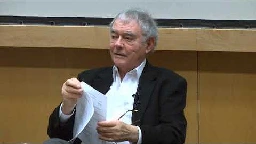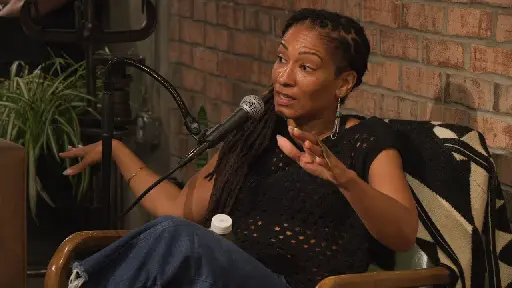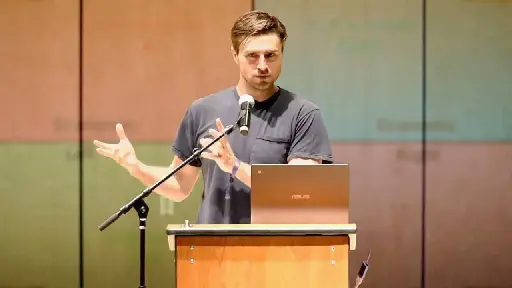
I live in a city, but I'll share some programs that/organizers who may provide some inspiration:
BMORE Beautiful - provides trash picking kits and helps residents organize cleanups in their neighborhood. They were incredibly friendly, so might be worth reaching out on how to build a similar program in your area
Weed Warriors - trains participants to recognize and remove common invasive plants, provides training for participants on how to organize efforts in their communities
Community gardening - this video is from an animal liberation podcast, but the guest's opening story of being completely ignorant about gardening but doing it anyway is inspiring. The remainder is about their work on food justice and grassroots organizing
Compost collective - this is the podcast of the guest in the previous video. They interview the founder of Baltimore Compost Collective who works with youth in the city
Guerrilla gardening - this is a classic TED Talk. The speaker discusses growing food in a public space and how they successfully fought their city to keep their garden. They also talk about their volunteer gardening group, planting food gardens at homeless shelters
Maryland Food & Abolition Project - may no longer be active, but an interesting idea nonetheless. Their mission was (is?) to partner community gardens with prisons to provide fresh produce
Echoing @poVoq, don't discount seniors! I used to be a case manager for the elderly and many are more interested than people give them credit for.
Did you know they're edible? I found out from this video last week, but it seems like a lot of work.
YouTube Video
Click to view this content.
National Archives Identifier: 24376 Local Identifier: 111-EF-6 https://catalog.archives.gov/id/24376
Creator(s): Department of Defense. Department of the Army. Office of the Chief Signal Officer. (9/18/1947 - 3/1/1964) (Most Recent)
From: Series: Educational Films, 1942 - 1947
Record Group 111: Records of the Office of the Chief Signal Officer, 1860 - 1985
This item was produced or created: 1945
Other Title(s):Educational Film, no. 6
Scope & Content: Dramatizes the destructive effects of racial and religious prejudice. Reel 1 shows a fake wrestling match and "crooked" gambling games. An agitator addresses a street crowd; he almost convinces one man in the audience until the man begins to talk to a Hungarian refugee from Germany. A Nazi speaker harangues a crowd in Germany denouncing Jews, Catholics, and Freemasons. Reel 2, a German unemployed worker joins Hitler's Storm Troops. SS men attack Jewish and Catholic headquarters in Germany, and beat up a Jewish storekeeper. A German teacher explains Nazi racial theories; the teacher is dragged away by German soldiers.
Awesome resource :) I've been looking into soft landings too! Nearby me, there's a corp owned commercial lot that's been vacant for years, bare-bones maintenance. The street trees out front are Callery pear, which I can't do anything about, but the ground under them isn't tended.
There's also two very sad trees in the middle of the parking lot and one empty tree well (which recently inspired me to rewatch this video lol).
Your point at the end is crucial. I heard a local story about a bunch of people rolling up in a neighborhood, planting trees, never to be seen or heard from again :( Kinda gross and presumptive.

YouTube Video
Click to view this content.
>Counteract the Bleakness of the Modern Urban Environment of rampant homelessness and over-priced housing by propagating and planting trees in neglected urban spaces. Tony Santoro shows you how with help from the Department of Unauthorized Forestry.
View the complete course: http://ocw.mit.edu/4-421JS13 Instructor: Julian Beinart This collection includes twenty-six lectures, including presentation of sli...

Institution: MIT
Lecturer: Julian Beinart
University Course Code: 4.241J
Subject: #architecture #urbanstudies #finearts #socialscience
Year: Spring 2013
Description: This course covers theories about the form that settlements should take and attempts a distinction between descriptive and normative theory by examining examples of various theories of city form over time. Case studies will highlight the origins of the modern city and theories about its emerging form, including the transformation of the nineteenth-century city and its organization. Through examples and historical context, current issues of city form in relation to city-making, social structure, and physical design will also be discussed and analyzed.
Course materials can be found on the MIT OpenCourseWare website.
>Over the centuries, physicians have placed migraine in various positions along the mind / body spectrum. Headache experts currently consider migraine a somatic disorder rooted in the brain. But this is a break from the past. Up until thirty years ago, doctors primarily viewed migraine as having both a psychological and a somatic basis. In what follows, I trace these historical understandings of migraine from the nineteenth-century understanding of migraine as a disorder of upper-class intellectuals, to the influential concept of the “migraine personality” in mid-twentieth-century America, and finally to contemporary theories of comorbidity.
[...]
>I pay close attention to how, at each historical turn, biomedical discourses come to enact and reinforce cultural narratives about gender, class, and pain via the encoded inclusion of moral character. After all, the credibility and the legitimacy of a disorder — and how much we, as a society, choose to invest in its treatment — is intimately tied to how we perceive the moral character of the patient.
Mr. Trash Wheel is pretty cool:

YouTube Video
Click to view this content.
>n her 2016 Edward W. Said lecture, Naomi Klein examines how Said's ideas of racial hierarchy, including Orientalism, have been the silent partners to climate change since the earliest days of the steam engine, continuing to present day decisions to let entire nations drown and others warm to lethal levels. The lecture looks at how Said’s bold universalist vision might form the basis for a response to climate change grounded in radical inclusion, belonging and restorative justice.

YouTube Video
Click to view this content.
>17 years ago, I was amazed by the incredibly loud pulsing chorus of cicadas in my backyard. I improvised this tune that I had to name "The Cicada Reel". I recorded the tune a year later on "Journey to the Heartland" (Maggie’s Music, 2005). And the cicadas are back in full force. Shortly after I recorded this video, they hit 93 dB’s. So here it is again: The Cicada Reel, played on a Dusty Strings D670 with dampers.
I grew up on concrete with streets peppered by exotic callery pear and feral pigeons. It wasn't until a friend moved to a neighborhood with big yards (for the city, anyway) that I saw cardinals, bluejays, cottontails, foxes, and nights lit up by fireflies.
I live close to that neighborhood now and the streets here are lined with willow oak, black cherry, and sycamore. So many woodland creatures and cool bugs, some of which are recorded on iNat.
But go a mile south to a redlined neighborhood and the canopy is sparse to none. The streets are lined with empty tree wells, usually sloppily paved over. Some years ago, the police installed bright white spotlights and surveillance cameras. Absolutely brutal stuff.
Closing a herbarium during the sixth mass extinction 🤡

YouTube Video
Click to view this content.
>In this revelatory work, Ruha Benjamin calls on us to take imagination seriously as a site of struggle and a place of possibility for reshaping the future. > >A world without prisons? Ridiculous. Schools that foster the genius of every child? Impossible. Work that doesn’t strangle the life out of people? Naive. A society where everyone has food, shelter, love? In your dreams. Exactly. Ruha Benjamin, Princeton University professor, insists that imagination isn’t a luxury. It is a vital resource and powerful tool for collective liberation. Imagination: A Manifesto is her proclamation that we have the power to use our imaginations to challenge systems of oppression and to create a world in which everyone can thrive. But obstacles abound. We have inherited destructive ideas that trap us inside a dominant imagination. Consider how racism, sexism, and classism make hierarchies, exploitation, and violence seem natural and inevitable—but all emerged from the human imagination. The most effective way to disrupt these deadly systems is to do so collectively. Benjamin highlights the educators, artists, activists, and many others who are refuting powerful narratives that justify the status quo, crafting new stories that reflect our interconnection, and offering creative approaches to seemingly intractable problems. Imagination: A Manifesto offers visionary examples and tactics to push beyond the constraints of what we think, and are told, is possible. This book is for anyone who is ready to take to heart Toni Morrison’s instruction: “Dream a little before you think.”
Institution: Yale
Lecturer: Professor Shelly Kagan
University Course Code: PHIL 176
Subject: #philosophy #death #metaphysics #valuetheory
Year: Spring 2007
Description: There is one thing I can be sure of: I am going to die. But what am I to make of that fact? This course will examine a number of issues that arise once we begin to reflect on our mortality. The possibility that death may not actually be the end is considered. Are we, in some sense, immortal? Would immortality be desirable? Also a clearer notion of what it is to die is examined. What does it mean to say that a person has died? What kind of fact is that? And, finally, different attitudes to death are evaluated. Is death an evil? How? Why? Is suicide morally permissible? Is it rational? How should the knowledge that I am going to die affect the way I live my life?
Course materials can be found on the Open Yale Courses website.
When I was a kid, I was like the creator, what a cool sci-fi movie! As an adult, I realize Starship Troopers, along with Trading Places and Little Shop of Horrors, heavily shaped my politics 😂
I felt that too, especially the manner in which he poked fun at their contradictions. It comes off as dismissive, but I don't think this is actually the case.
Based on an interview I watched of Citarella, he seeks to understand the teens and their motivations, telling their stories with compassion. Citarella also stated that the right is taking this phenomenon seriously (and using it as a pipeline), so the left should as well.

YouTube Video
Click to view this content.
Joshua Citarella is a visual artist who studies the memes and culture of Gen Z teens radicalized on the internet.
Institution: UCLA
Lecturer: Professor Courtenay Raia
University Course Code: HIST 2D
Subject: #history #science #religion #magic #antiquity #modernity
Year: 2009
Description: Professor Courtenay Raia lectures on science and religion as historical phenomena that have evolved over time. Examines the earlier mind-set before 1700 when into science fitted elements that came eventually to be seen as magical. The course also question how Western cosmologies became "disenchanted." Magical tradition transformed into modern mysticisms is also examined as well as the political implications of these movements. Includes discussion concerning science in totalitarian settings as well as "big science" during the Cold War.
If nobody got me, I know Chesapeake Bay Watershed got me 🙏 Can I get an amen?
The above map doesn't include fishing, it's showing land use. This shows fishing:

Here is another one about land animals:







